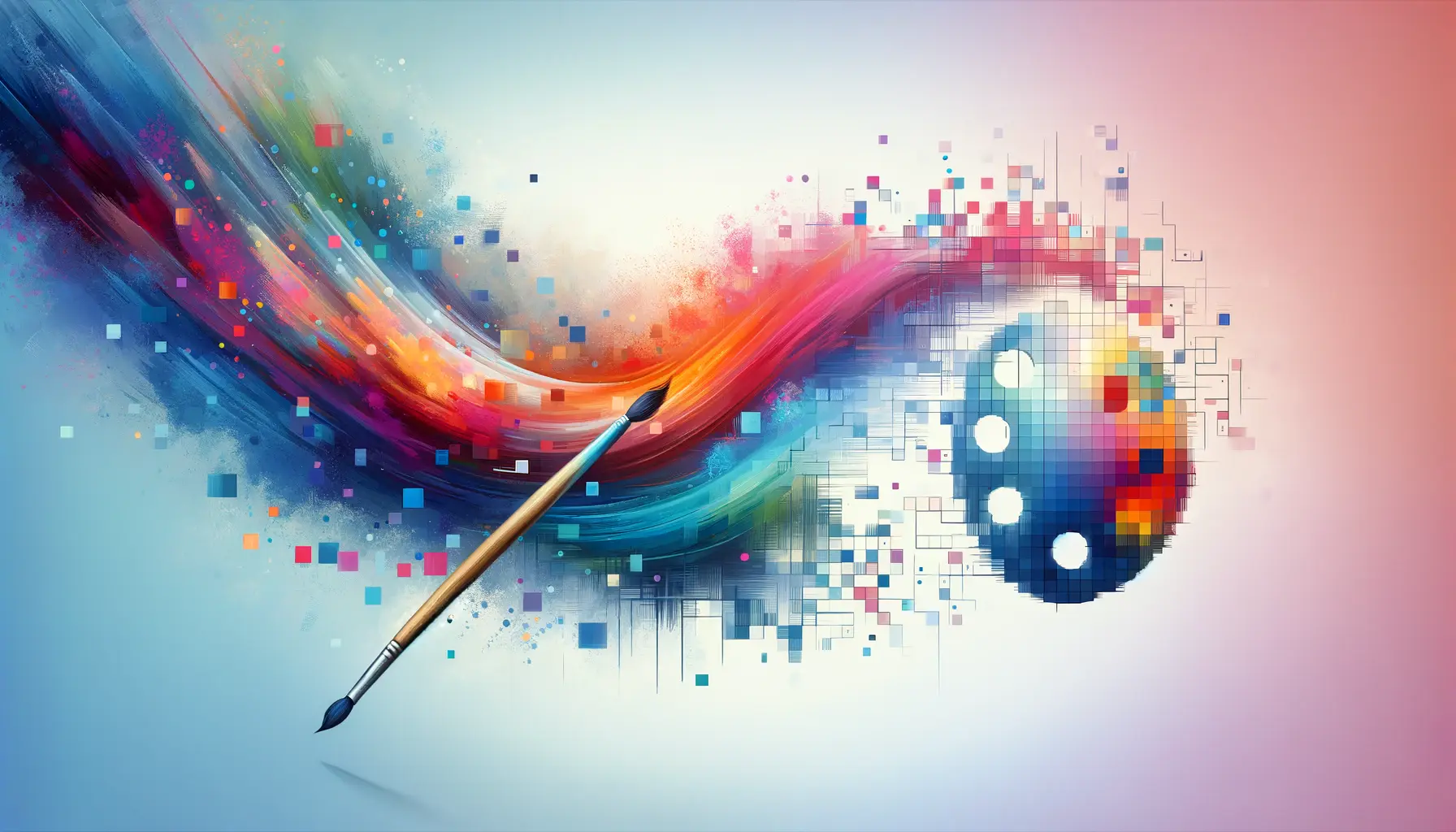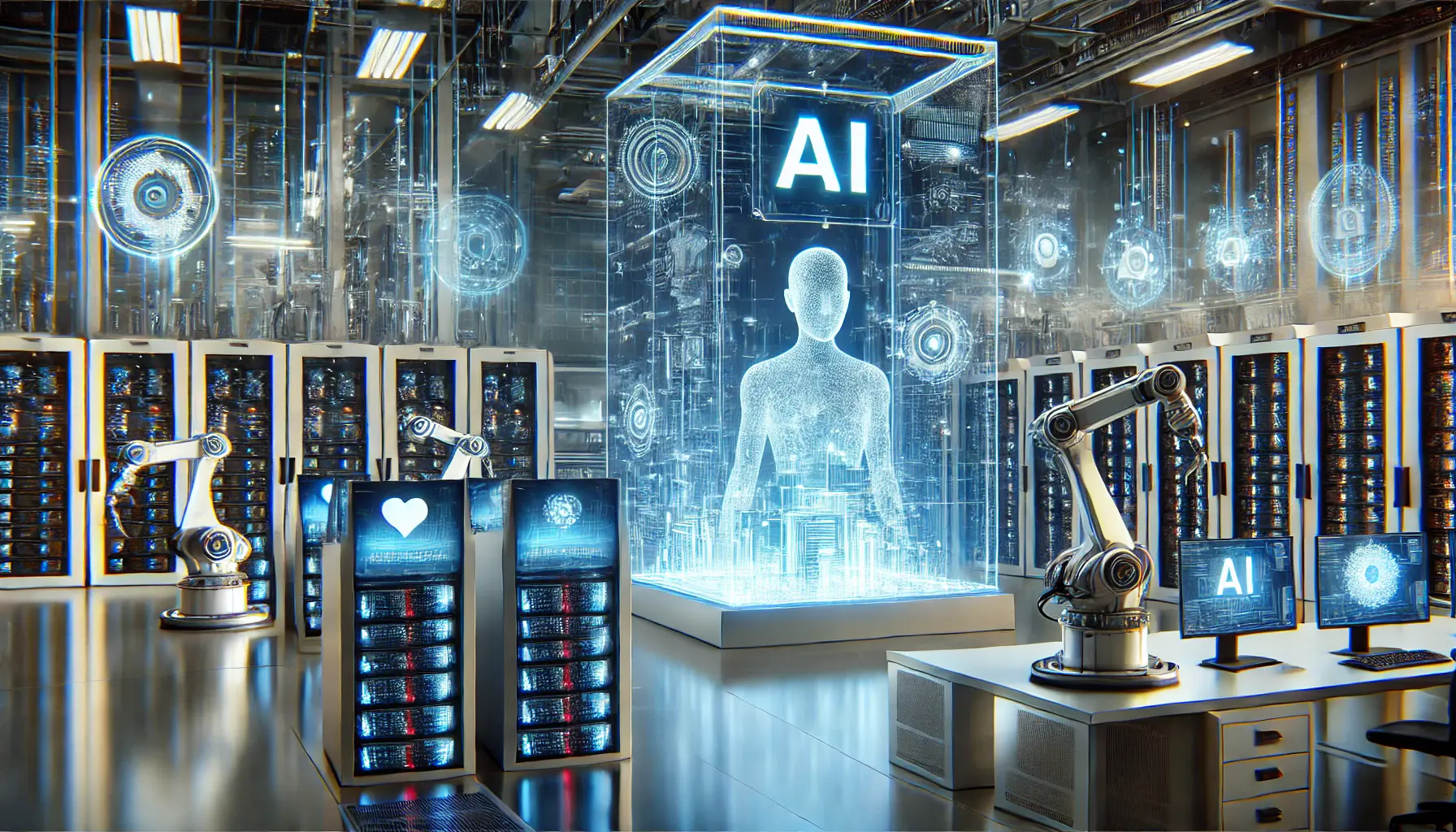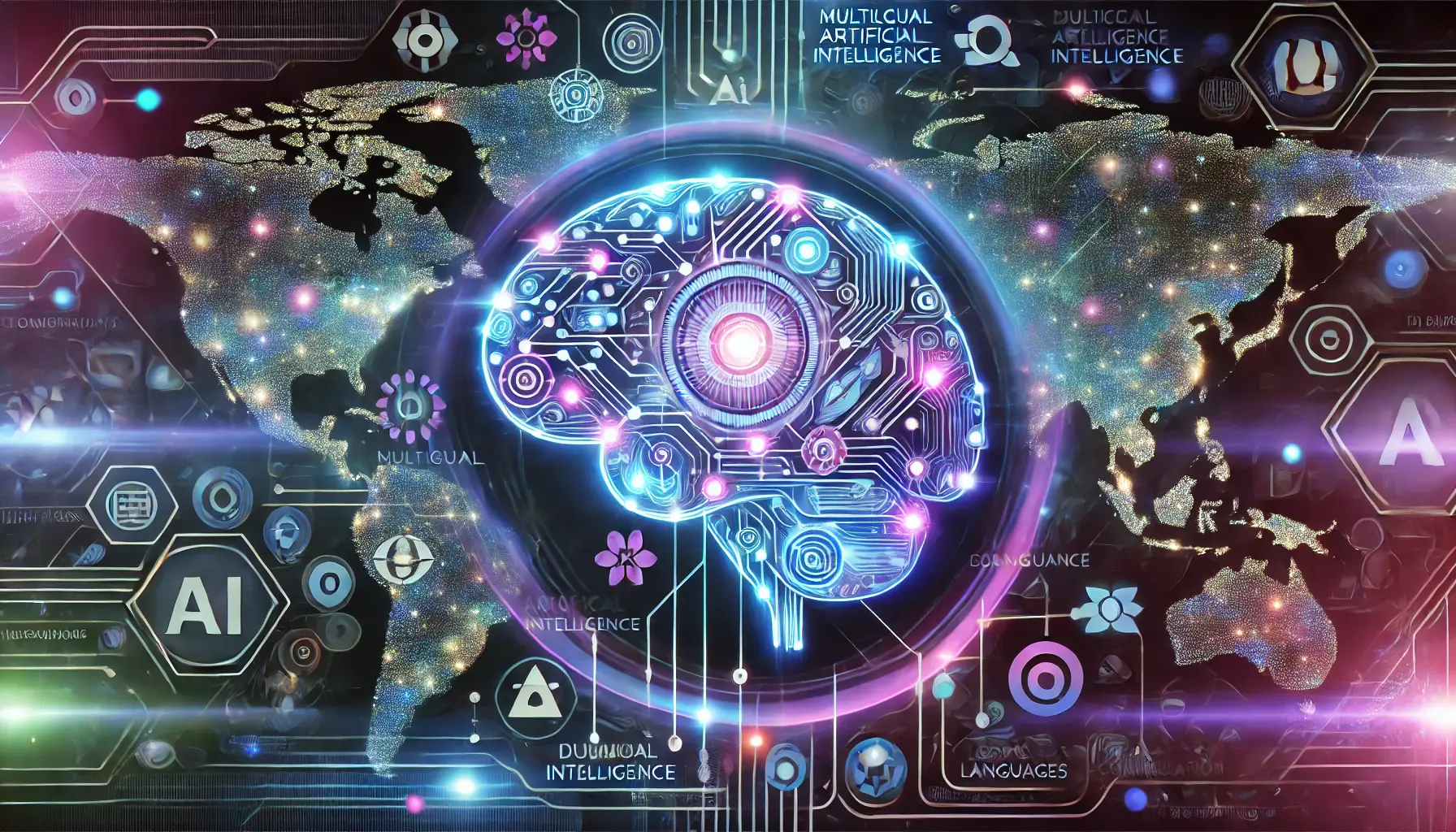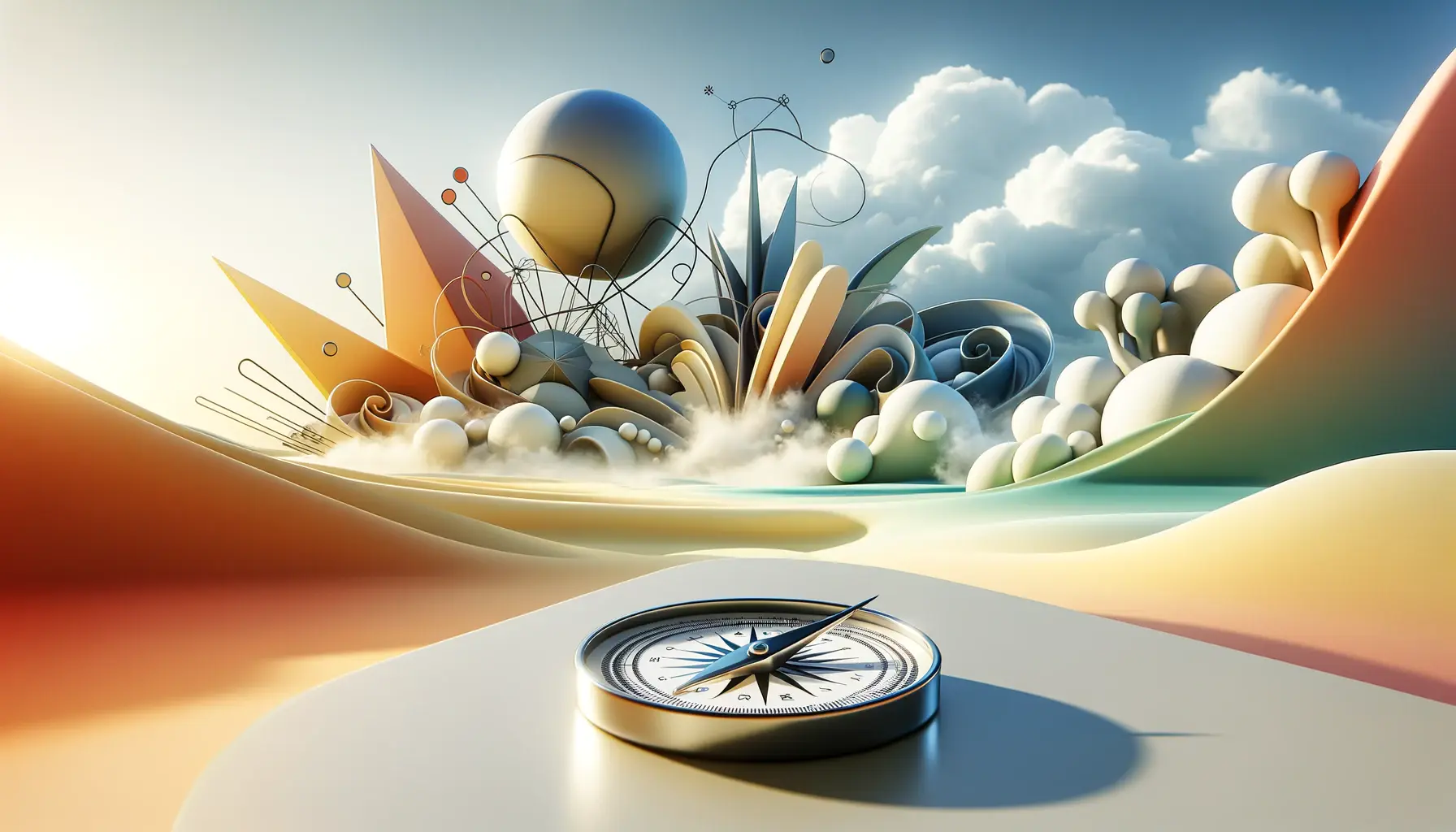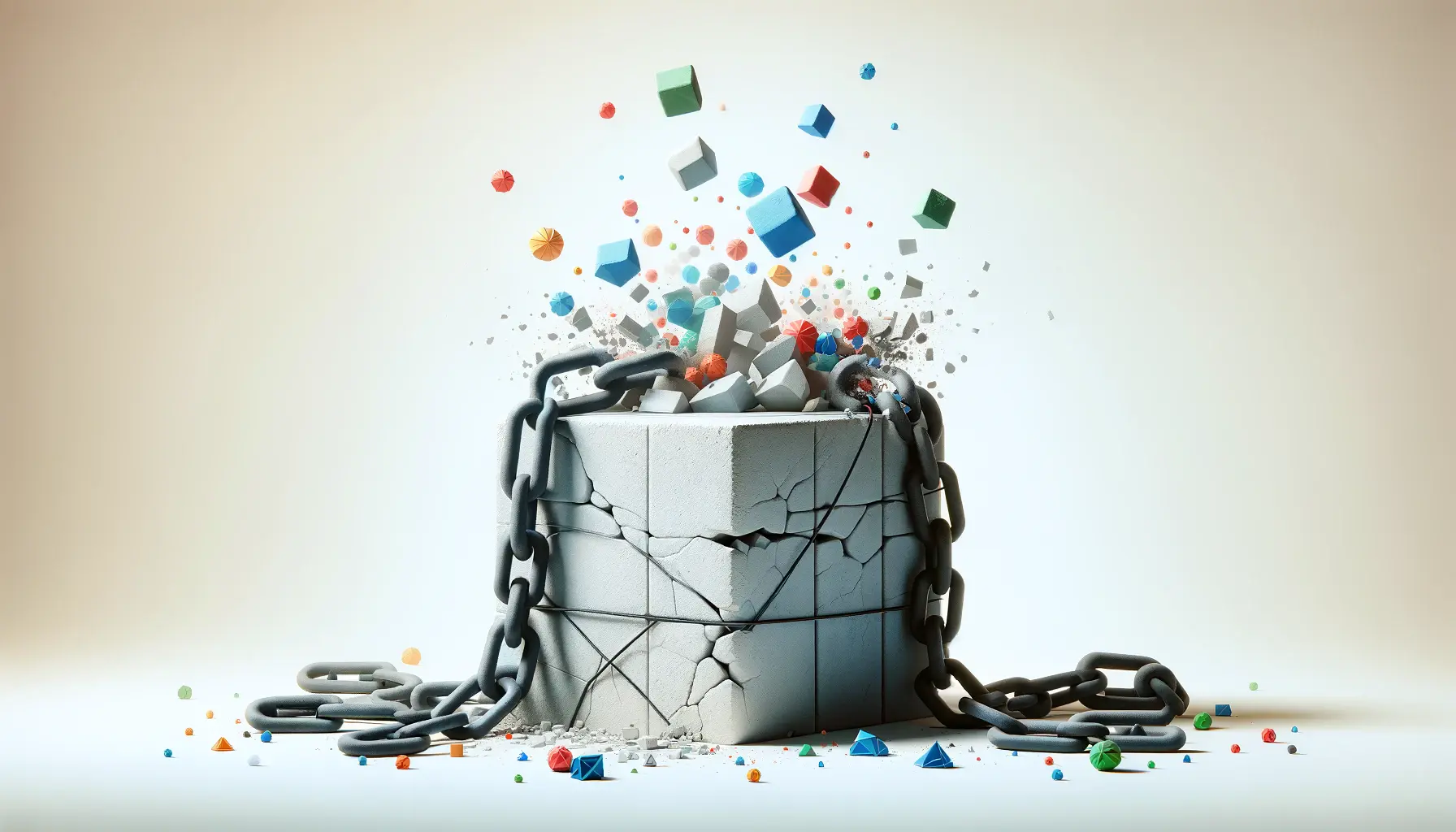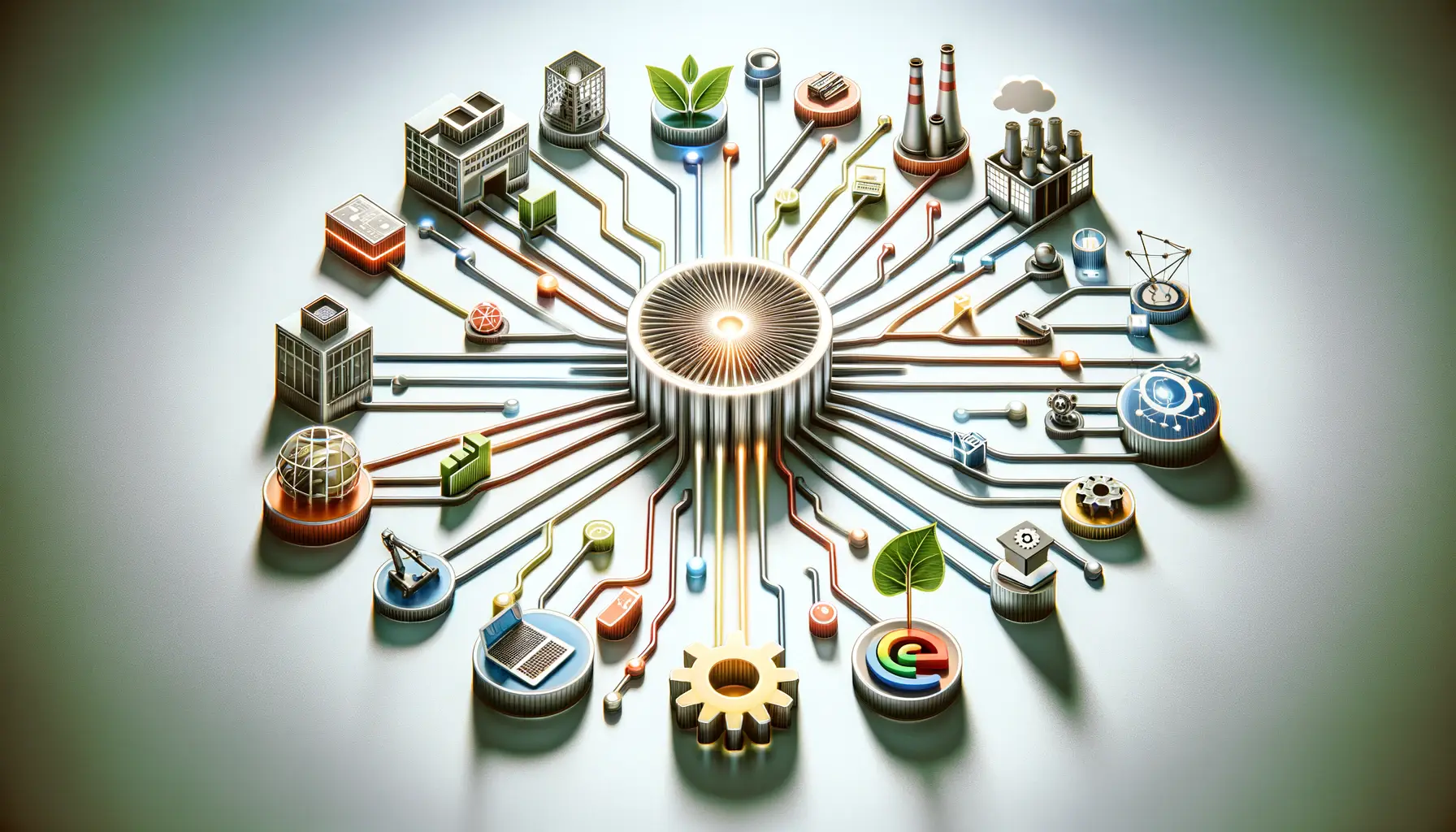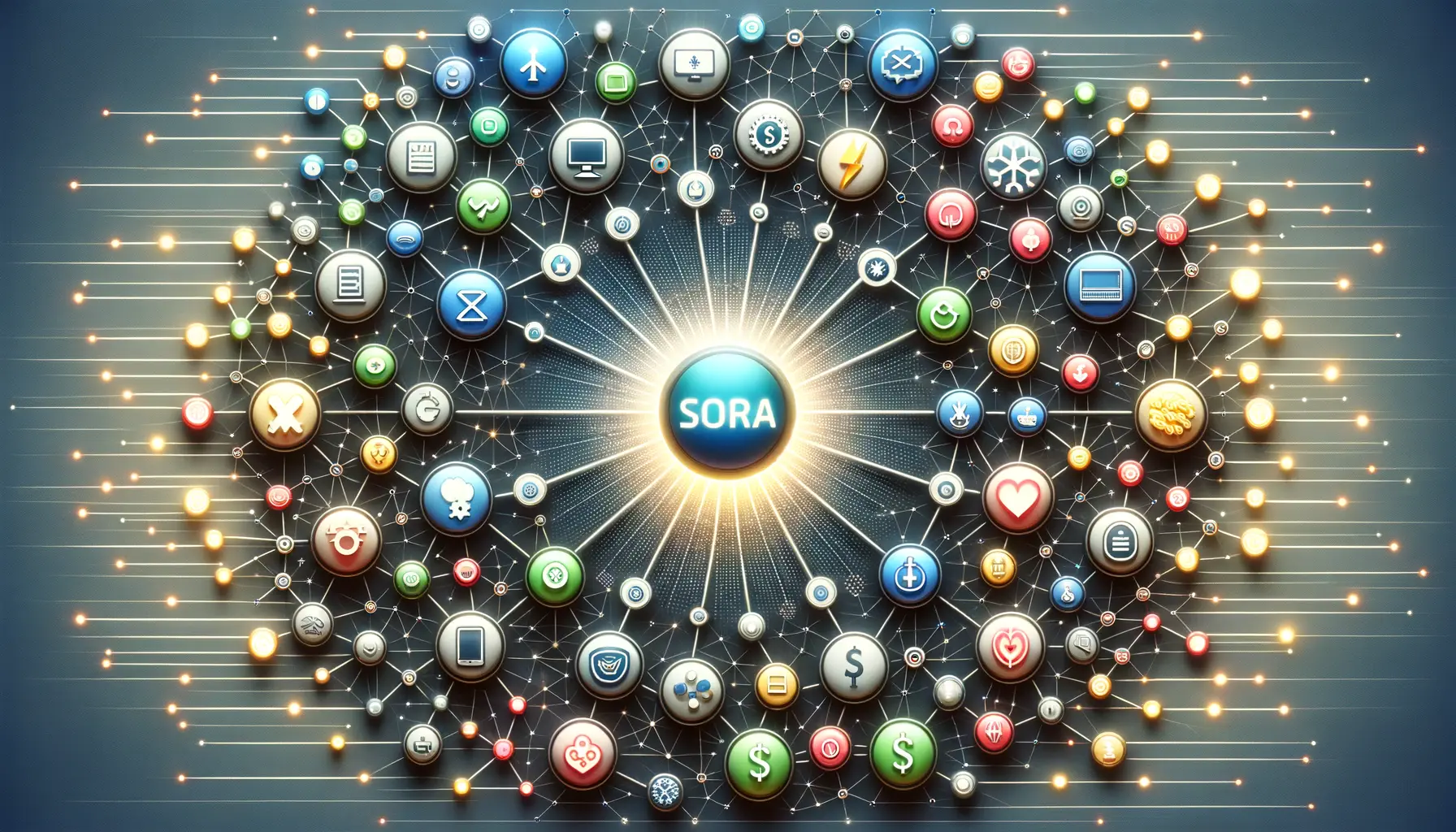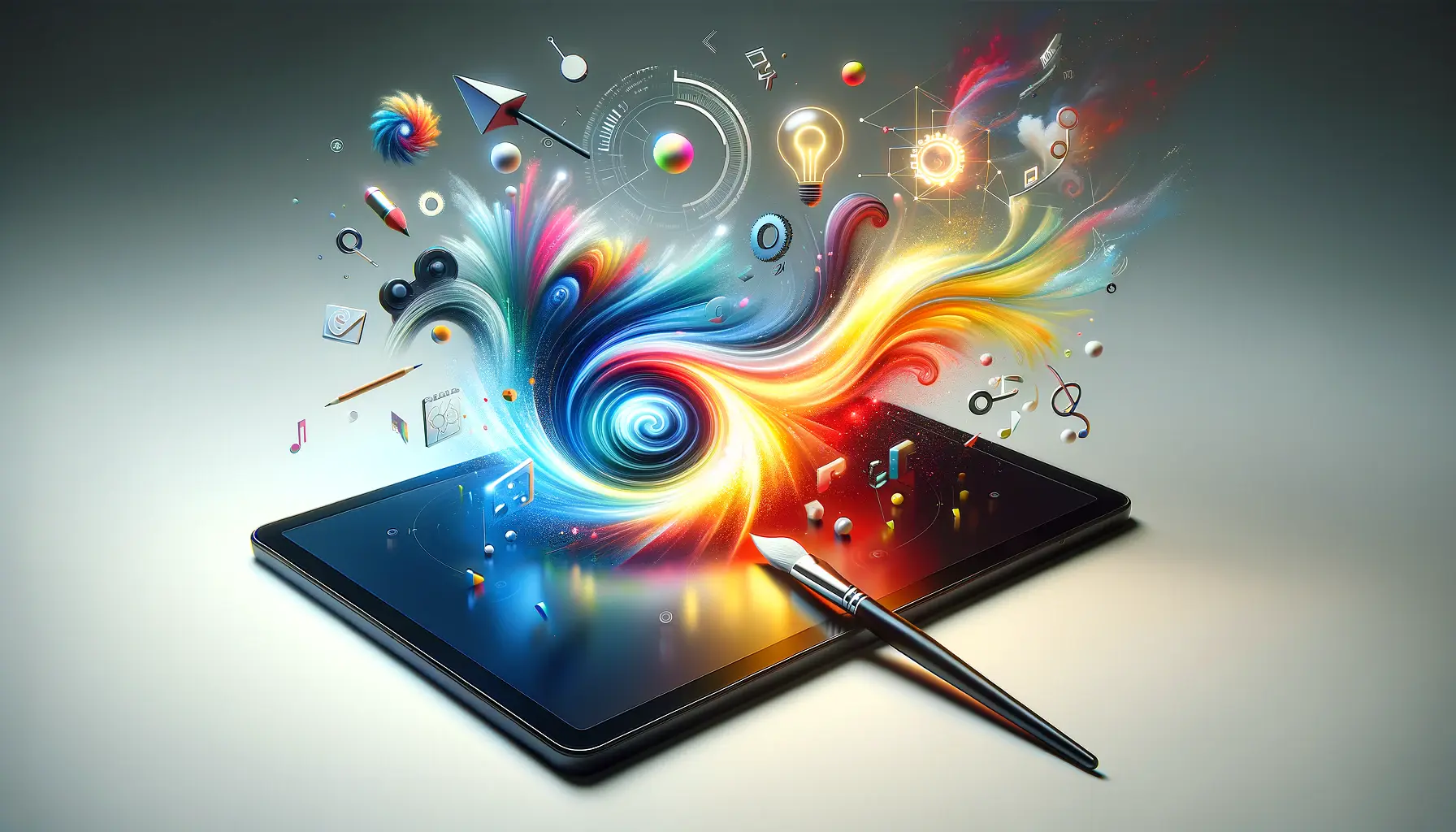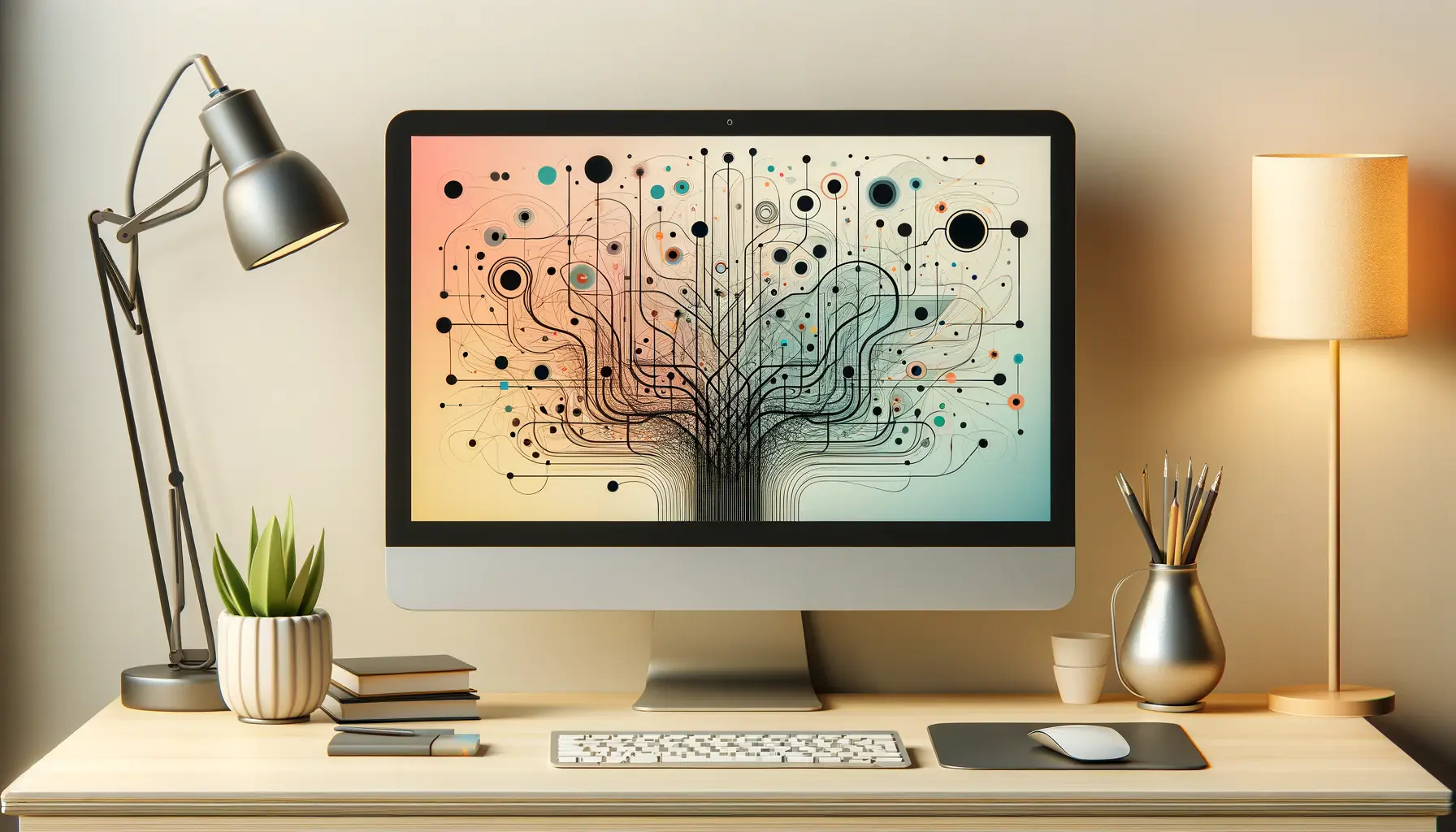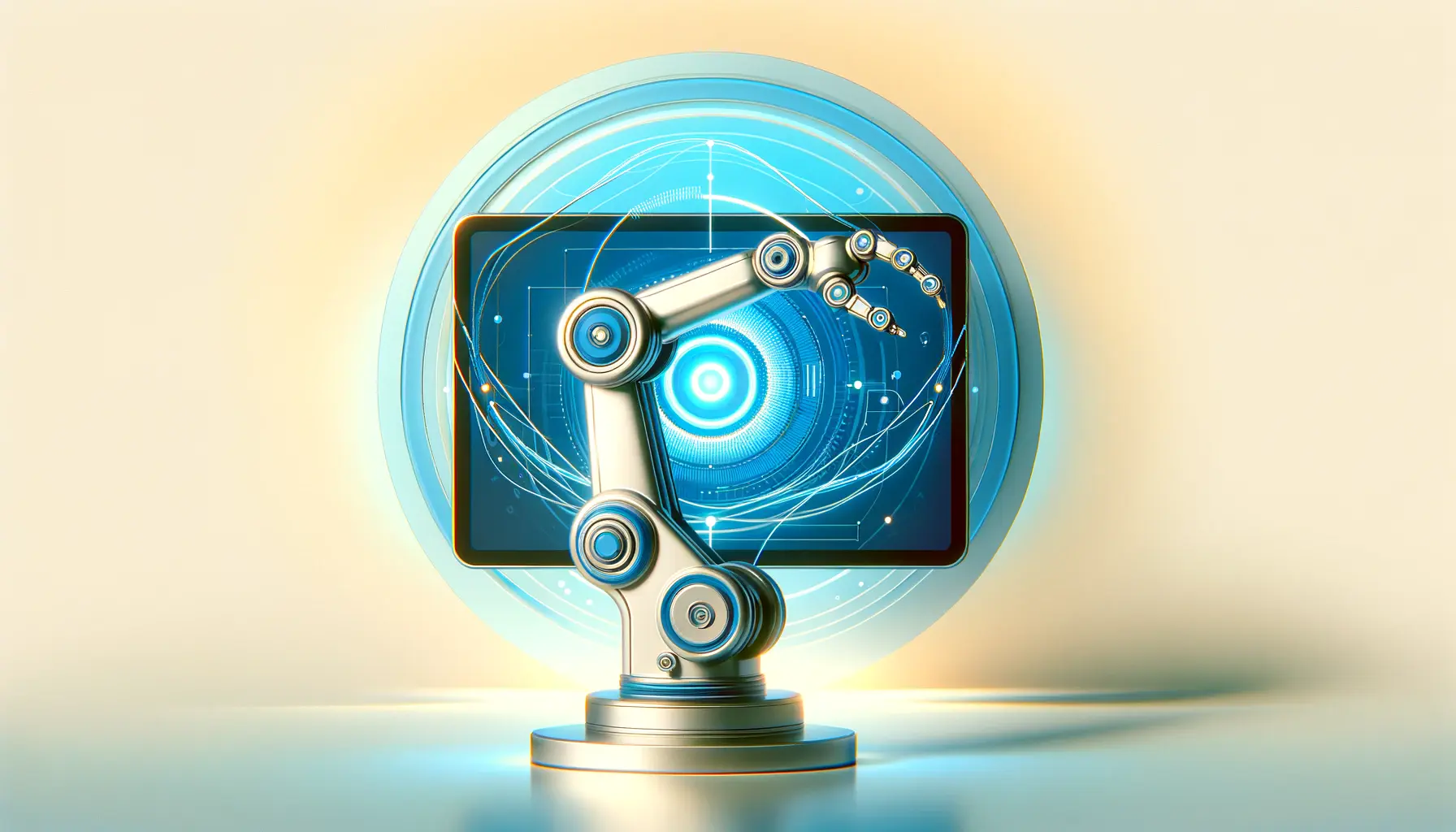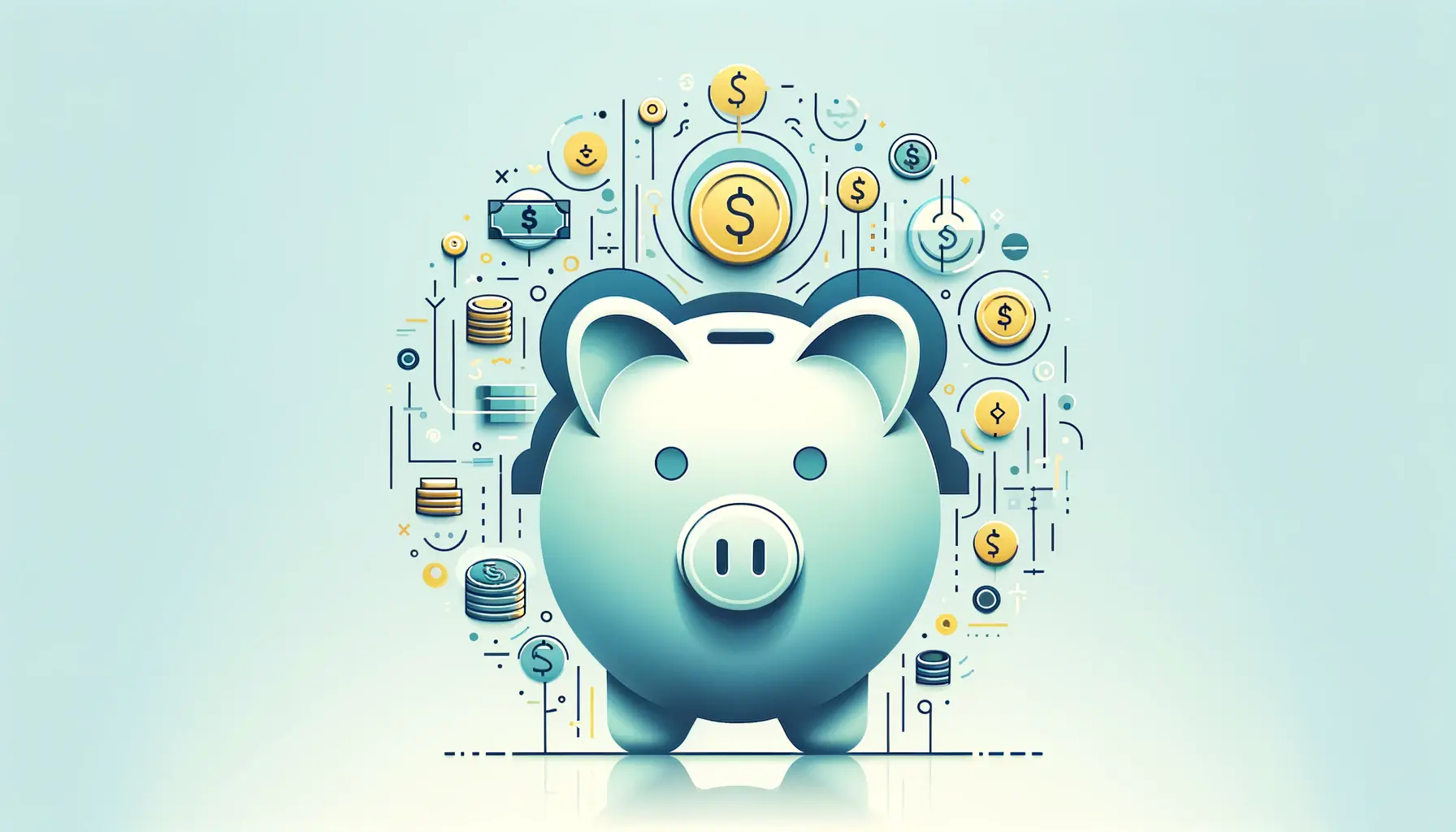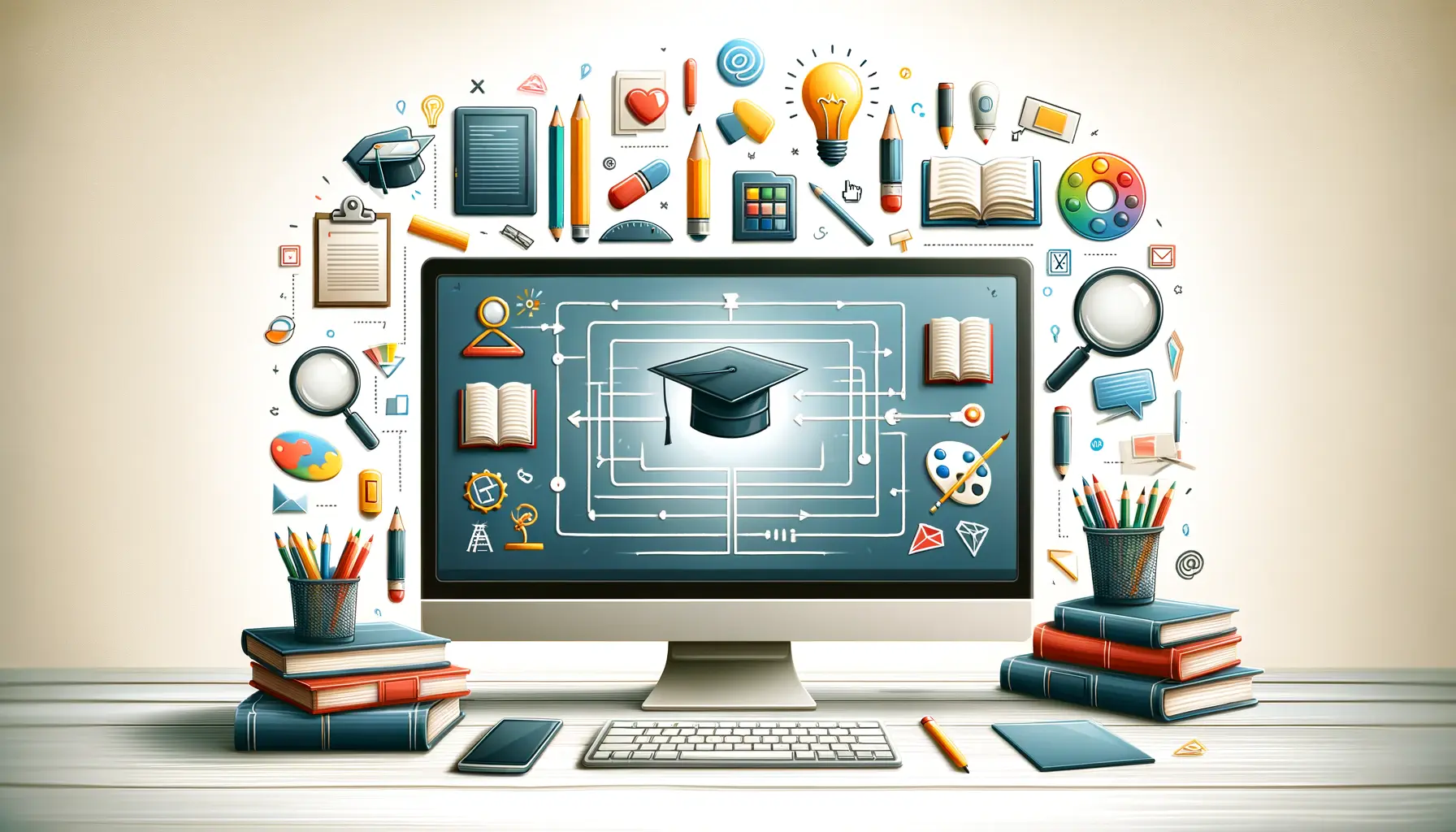The advent of DALL-E, an artificial intelligence program developed by OpenAI, has sparked a revolution in the creative industries.
This innovative tool, capable of generating highly detailed and complex images from textual descriptions, stands at the forefront of a technological renaissance, reshaping the landscape of digital art, design, and beyond.
The implications of DALL-E’s capabilities extend far beyond mere novelty; they signal a transformative shift in how creative content is conceived, produced, and disseminated across various sectors.
At its core, DALL-E democratizes creativity, offering both seasoned professionals and novices alike the tools to bring their wildest imaginations to life.
This paradigm shift raises pivotal questions about the role of human creativity in an increasingly automated world.
As we delve deeper into the era of generative AI, the creative industries stand at a crossroads, poised to redefine the essence of artistic expression and innovation.
- The Genesis of DALL-E and Its Creative Disruption
- Revolutionizing Creative Workflows
- Transforming Visual Media and Entertainment
- Challenges and Ethical Considerations
- Future Prospects and Evolution of Creative AI
- Collaboration Between AI and Human Creativity
- Expanding the Horizons of Creative Expression
- Embracing the Future: DALL-E’s Role in Shaping Creative Industries
- DALL-E’s Impact on Creative Industries: FAQs
The Genesis of DALL-E and Its Creative Disruption
Understanding DALL-E’s Technology
DALL-E’s technology harnesses the power of advanced machine learning algorithms to interpret and visualize textual prompts into detailed images.
This process involves a complex interplay of data analysis, pattern recognition, and a vast database of visual references, enabling the AI to produce images that range from realistic renderings to surreal compositions.
The technology behind DALL-E not only highlights the capabilities of current AI advancements but also sets a new benchmark for creative tools in the digital age.
The introduction of DALL-E into the creative toolkit has opened up unprecedented avenues for artistic exploration and expression.
By removing traditional barriers to entry, such as the need for technical drawing skills or access to expensive software, DALL-E empowers a broader demographic to participate in the creative process.
This inclusivity fosters a more diverse and vibrant creative ecosystem, enriched by perspectives that were previously underrepresented in the arts.
Impact on Professional Creatives
For professional artists, designers, and content creators, DALL-E represents both an opportunity and a challenge.
On one hand, it serves as a powerful assistant, streamlining workflows, and offering new ways to generate ideas and visualize concepts quickly.
This efficiency can significantly enhance productivity, allowing creatives to focus on refining their visions and exploring more complex projects.
On the other hand, the rise of AI-generated content introduces concerns about the devaluation of traditional skills and the potential for oversaturation in the market.
As AI becomes more adept at producing high-quality images, the creative industries may experience shifts in demand for certain skills, emphasizing originality, conceptual thinking, and emotional resonance as key differentiators.
The challenge for creatives, then, is to leverage DALL-E as a tool for augmentation rather than replacement, integrating AI into their practice in ways that amplify their unique artistic voice.
Revolutionizing Creative Workflows
The integration of DALL-E into creative workflows marks a significant evolution in how projects are conceptualized and executed.
This AI tool not only accelerates the ideation phase but also introduces a level of versatility and experimentation previously unattainable with traditional methods.
By analyzing the impact of DALL-E on creative workflows, we can gain insights into the future trajectory of design and art creation.
Enhancing Ideation and Concept Development
The initial stages of any creative project involve brainstorming and concept development, processes that are inherently iterative and sometimes challenging.
DALL-E transforms these stages by providing:
- Instant Visualization: Quick generation of visual concepts from textual descriptions, facilitating rapid exploration of ideas.
- Expansive Creativity: Ability to produce diverse interpretations of a single prompt, encouraging broader creative thinking.
- Efficiency in Refinement: Streamlining the process of refining ideas, as DALL-E can adjust and regenerate images based on revised inputs.
Implications for Design and Art Production
The adoption of DALL-E within design and art production environments heralds a shift towards more dynamic and collaborative creation processes.
Key implications include:
- Collaborative Creativity: DALL-E acts as a creative partner, offering suggestions that can inspire new directions or solutions.
- Reduced Production Times: Accelerates the production phase by providing a base image that can be further edited or refined by the artist.
- Accessibility to Non-Designers: Enables individuals without formal design training to participate in the creative process, democratizing design and art creation.
Case Study: DALL-E in Advertising Campaigns
A notable application of DALL-E has been in the advertising industry, where speed and innovation are crucial.
In one case, an advertising agency utilized DALL-E to:
- Quickly generate a series of concept art for a client’s campaign, significantly reducing the time from brainstorming to approval.
- Experiment with unconventional visual themes that would have been resource-intensive to produce manually.
- Customize and refine AI-generated images to align with the brand’s identity, ensuring consistency across the campaign.
This case study exemplifies how DALL-E can be integrated into commercial creative processes, enhancing efficiency while fostering a culture of innovation and experimentation.
The key takeaway is the potential of AI tools like DALL-E to complement human creativity, rather than compete with it, by opening up new possibilities for creative expression.
Transforming Visual Media and Entertainment
The impact of DALL-E extends beyond traditional art and design, venturing into the realms of visual media and entertainment.
This AI’s ability to generate detailed and contextually relevant images from textual descriptions offers exciting possibilities for content creation across various platforms, including film, television, gaming, and online media.
Revolutionizing Storyboarding and Concept Art
In the pre-production phase of film and television, storyboarding and concept art play critical roles in visualizing narratives and setting the aesthetic tone.
DALL-E streamlines these processes by:
- Enabling directors and writers to quickly visualize scenes and characters, facilitating more effective communication and decision-making.
- Providing a vast array of stylistic options for concept art, allowing for a more exploratory approach to defining the visual language of a project.
Enhancing Gaming Environments and Character Design
The gaming industry, known for its reliance on rich visuals and immersive worlds, stands to benefit significantly from DALL-E’s capabilities.
Game developers can use DALL-E to:
- Generate diverse and intricate environments, reducing the time and resources required for asset creation.
- Create unique character designs that can then be refined and brought to life by artists, adding depth and variety to the gaming experience.
Content Creation for Digital Platforms
For creators of digital content, including social media influencers, bloggers, and online marketers, DALL-E offers tools to:
- Produce original and eye-catching visuals tailored to specific content themes, enhancing engagement and reach.
- Experiment with different visual styles and formats without the need for extensive graphic design skills, encouraging creative freedom and experimentation.
The integration of DALL-E into visual media and entertainment not only accelerates content creation but also enriches the creative landscape with unprecedented levels of diversity and innovation.
By bridging the gap between imagination and visual representation, DALL-E empowers creators to push the boundaries of storytelling and audience engagement.
Challenges and Ethical Considerations
While DALL-E’s influence on the creative industries heralds a new era of innovation, it also raises significant challenges and ethical considerations.
The deployment of AI in creative processes necessitates a careful examination of its implications on copyright, originality, and the broader societal impact.
Navigating Copyright and Ownership Issues
The ability of DALL-E to generate images based on a vast dataset of existing artwork and photographs introduces complex copyright issues.
Key concerns include:
- Determining the ownership of AI-generated images, especially when they are derivative of copyrighted materials.
- Addressing the potential for AI to inadvertently reproduce copyrighted works without acknowledgment or compensation to the original creators.
Maintaining Originality and Authenticity
As AI-generated art becomes more prevalent, questions arise about the value of originality and authenticity in the creative industries.
Challenges include:
- Ensuring that AI tools like DALL-E are used to supplement human creativity, rather than replace it.
- Preserving the unique voice and vision of artists in a landscape increasingly influenced by algorithmic creation.
Addressing Societal and Cultural Impacts
The widespread use of AI in creative endeavors also prompts reflection on its societal and cultural ramifications.
Considerations involve:
- Examining the impact of AI on cultural diversity and representation, particularly if AI-generated content perpetuates existing biases.
- Understanding the potential for AI to democratize art creation, making it more accessible to individuals without formal training or resources.
Addressing these challenges and ethical considerations is crucial for ensuring that the integration of AI like DALL-E into the creative industries is responsible, equitable, and conducive to the continued flourishing of human creativity.
The dialogue between technologists, artists, legal experts, and policymakers will play a pivotal role in navigating the evolving landscape of AI-generated art.
Future Prospects and Evolution of Creative AI
The rapid advancement of AI technologies like DALL-E signals a transformative future for the creative industries.
As these tools evolve, they promise to unlock new dimensions of creativity, collaboration, and efficiency.
The future prospects of creative AI encompass a broad spectrum of possibilities, from enhancing artistic expression to reshaping the economics of creative work.
Advancements in AI Capabilities
Future iterations of DALL-E and similar AI technologies are expected to offer even greater sophistication in understanding and interpreting human prompts.
Anticipated advancements include:
- Improved accuracy in generating images that closely align with users’ intentions, reducing the gap between concept and creation.
- Enhanced ability to mimic a wider range of artistic styles, offering creatives an expansive toolkit for visual exploration.
Integration Across Creative Domains
As AI becomes more integrated into creative workflows, its influence is likely to extend across various domains, including:
- Architecture and Interior Design: Utilizing AI to visualize architectural concepts and interior design options in real-time.
- Fashion Design: Generating innovative patterns and designs, streamlining the process from concept to prototype.
Democratization of Creativity
One of the most significant impacts of creative AI is its potential to democratize the creative process.
By lowering barriers to entry, DALL-E and similar technologies could:
- Enable individuals without formal artistic training to bring their creative visions to life.
- Facilitate a more inclusive creative community, enriched by diverse perspectives and voices.
The evolution of creative AI holds the promise of a more dynamic and inclusive creative landscape.
As we look to the future, the challenge will be to harness these technologies in ways that enhance human creativity, foster innovation, and respect the ethical dimensions of art creation.
The journey ahead for DALL-E and the creative industries is not just about technological innovation, but also about reimagining the boundaries of what is possible in the realm of creative expression.
Collaboration Between AI and Human Creativity
The relationship between AI and human creativity is not a zero-sum game but a collaborative partnership that can enhance the creative process in unprecedented ways.
The synergy between DALL-E’s algorithmic capabilities and human artistic vision opens up a new frontier for creative expression, where the boundaries between technology and art become increasingly blurred.
AI as a Creative Co-pilot
Envisioning AI as a co-pilot in the creative journey shifts the narrative from displacement to empowerment.
This collaboration can manifest in various forms:
- Idea Generation: AI can serve as a brainstorming tool, offering visual suggestions that spark new ideas or directions for creative projects.
- Exploration of New Aesthetics: Artists and designers can experiment with AI-generated imagery to explore new aesthetics or unconventional combinations of styles and elements.
Enhancing Creative Education and Training
The integration of AI tools like DALL-E into educational curricula for art and design represents a significant opportunity to enhance creative education.
Potential benefits include:
- Providing students with a broader range of tools and techniques for artistic exploration and expression.
- Encouraging a multidisciplinary approach to creativity, where technology and art intersect in innovative ways.
Future Collaborative Projects
Looking ahead, the collaboration between AI and human creativity is poised to give rise to new forms of art and creative projects that were previously unimaginable.
These projects might include:
- Interactive art installations that use AI to respond to and evolve with audience input.
- Collaborative design platforms where AI-generated concepts are refined and realized by a community of artists and designers.
The potential for AI to augment human creativity is vast and largely untapped.
As we navigate this evolving landscape, the focus should be on leveraging AI to enhance and expand the creative capabilities of individuals, fostering a future where technology and creativity coalesce to enrich the human experience.
The future of creativity lies not in the hands of machines but in the collaborative interplay between human ingenuity and technological innovation.
Expanding the Horizons of Creative Expression
The advent of AI like DALL-E in the creative industries is not just a technological milestone; it represents a profound expansion of the horizons of creative expression.
By transcending traditional limitations, AI opens up a universe of possibilities for artists, designers, and creators across all disciplines.
This new era of creativity is characterized by an unprecedented fusion of human imagination and algorithmic precision.
Breaking Boundaries in Art and Design
AI’s capacity to generate images from textual descriptions allows creators to break free from the constraints of their technical skills or the physical materials at their disposal.
This liberation from traditional boundaries enables:
- Exploration of complex, abstract, or surreal concepts that are difficult to capture with conventional techniques.
- Creation of art and designs that reflect a pure, unfiltered translation of the artist’s vision, unencumbered by the limitations of human execution.
Fostering a New Creative Culture
The democratization of creative tools heralded by AI technologies fosters a new culture of creativity where access and opportunity are more evenly distributed.
This cultural shift is likely to:
- Encourage a more diverse range of voices and perspectives in the arts and design, enriching the cultural landscape with previously underrepresented narratives.
- Promote a culture of experimentation and risk-taking, as the cost and barriers to entry for creating high-quality artistic work are significantly reduced.
The Future of Creative Industries
As we look to the future, the impact of AI on the creative industries is poised to grow, reshaping not only how art is made but also how it is consumed and appreciated.
The potential for AI to:
- Transform the economics of creative production, making it more sustainable for artists and creators to pursue their passions.
- Enhance the interactivity and personalization of art, offering audiences more immersive and engaging experiences.
In this rapidly evolving landscape, the true potential of AI in the creative industries lies in its ability to augment human creativity, opening up new avenues for expression and innovation.
The journey ahead is one of discovery and exploration, as we redefine the boundaries of what is possible in art and design.
The fusion of AI and human creativity promises not just a revolution in how we create but a transformation in how we conceive of creativity itself.
Embracing the Future: DALL-E’s Role in Shaping Creative Industries
The journey through the realms of creativity, augmented by the revolutionary AI DALL-E, reveals a landscape brimming with potential and fraught with challenges.
As we stand on the cusp of a new era in the creative industries, it’s clear that DALL-E is not just a tool but a harbinger of change, pushing the boundaries of what’s possible in art, design, and beyond.
The implications of this technological marvel extend far beyond the novelty of generating images from text; they touch upon the very essence of human creativity, collaboration, and cultural expression.
The Synergy of Human and Machine Creativity
At the heart of DALL-E’s impact on the creative industries is the symbiotic relationship between human creativity and AI’s algorithmic capabilities.
This partnership offers a glimpse into a future where:
- Artists leverage AI to explore new frontiers of expression, unencumbered by the limitations of traditional mediums.
- Designers harness the power of AI to streamline workflows, enhance productivity, and bring unprecedented ideas to life.
- Creators across disciplines find in AI a collaborator that broadens the scope of their work, making creativity more accessible and inclusive.
Navigating the Challenges Ahead
Yet, the path forward is not without its obstacles.
The integration of DALL-E into the creative industries raises pressing questions about copyright, originality, and the ethical use of AI in art.
Addressing these challenges requires a concerted effort from all stakeholders—artists, technologists, legal experts, and policymakers—to ensure that the evolution of creative AI fosters a landscape that is equitable, respectful of intellectual property, and conducive to the flourishing of human creativity.
The Future Is Collaborative
As we look to the horizon, the role of DALL-E in the creative industries is poised to expand, offering both opportunities and challenges.
The future of creativity lies in embracing the collaborative potential of AI, where technology serves as a bridge between imagination and reality, enabling us to realize visions that were once confined to the realm of dreams.
In this future, the value of human creativity is not diminished but rather amplified by AI, as we learn to harness these tools in service of our artistic and design aspirations.
In conclusion, DALL-E’s impact on the creative industries is a testament to the transformative power of technology.
As we navigate this new landscape, our success will hinge on our ability to foster a harmonious relationship between human creativity and AI, ensuring that the arts continue to thrive as a vital expression of human experience.
The journey with DALL-E at our side is just beginning, and it promises to be a journey of discovery, innovation, and, most importantly, boundless creativity.
DALL-E’s Impact on Creative Industries: FAQs
Explore common inquiries about how DALL-E is reshaping the creative landscape.
While DALL-E enhances creative capabilities, it’s seen as a tool for augmentation rather than replacement, empowering designers with new possibilities.
DALL-E introduces a new era of human-machine collaboration, transforming creative processes and offering unprecedented creative freedom.
Generative AI like DALL-E is empowering artists and designers, reshaping societal norms, and fostering innovative human-machine collaborations.
DALL-E’s commercial use poses both opportunities and challenges, potentially transforming creative work but not necessarily killing creative careers.
DALL-E is changing how filmmakers and designers approach their work, offering tools for rapid visualization and creative experimentation.
DALL-E’s creative process involves generating imaginative artworks from textual prompts, showcasing the AI’s ability to interpret and visualize ideas.
DALL-E is likely to bring new opportunities and challenges to creative industries, enhancing creativity and potentially changing the landscape of creative work.
Yes, DALL-E serves as a powerful source of inspiration, encouraging creatives to explore new ideas and push the boundaries of traditional art forms.
